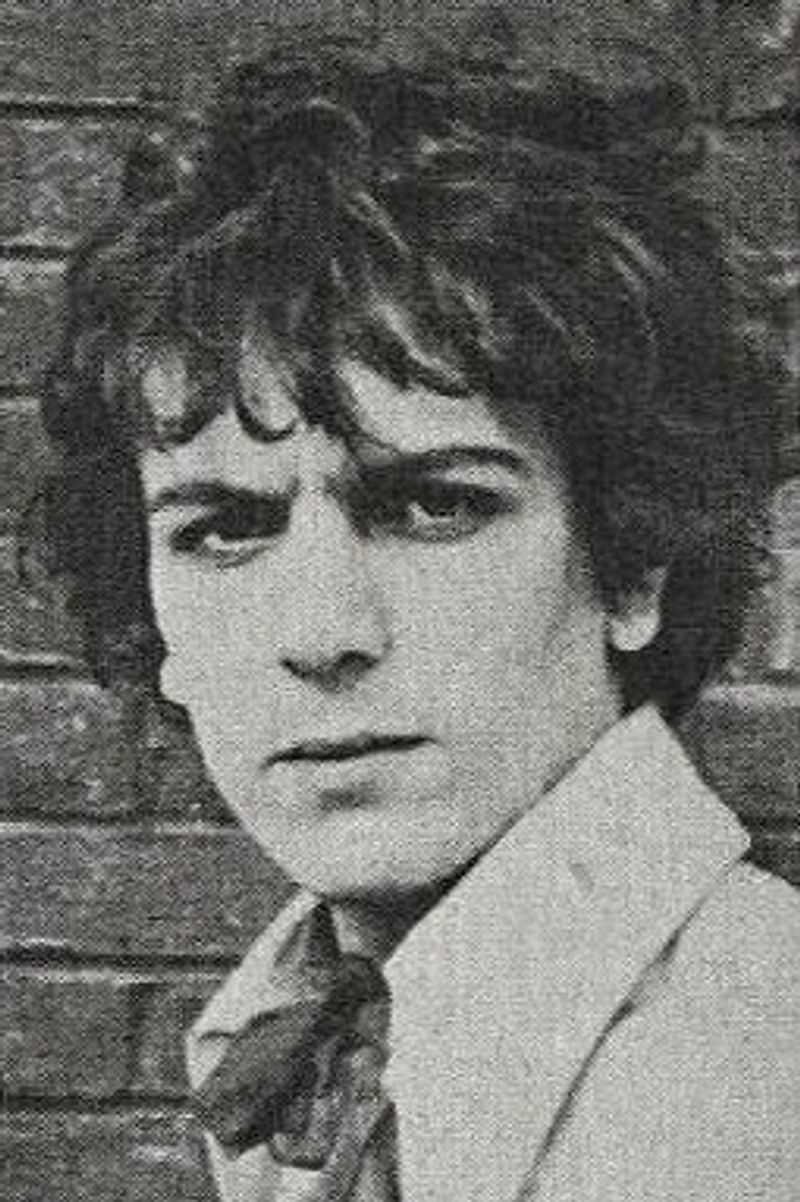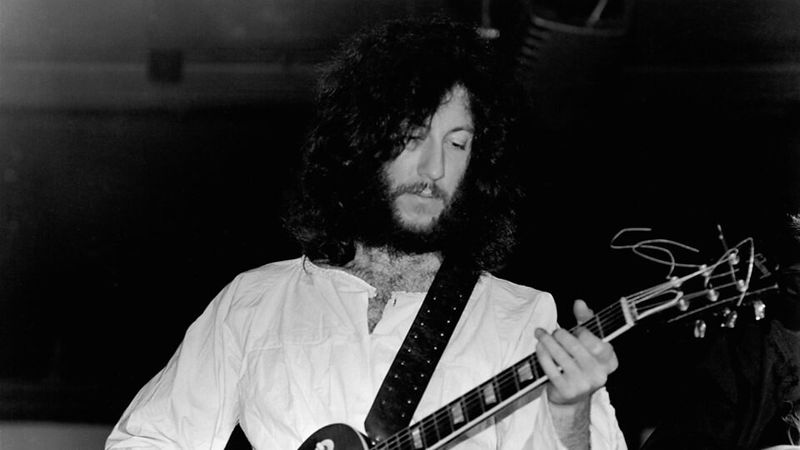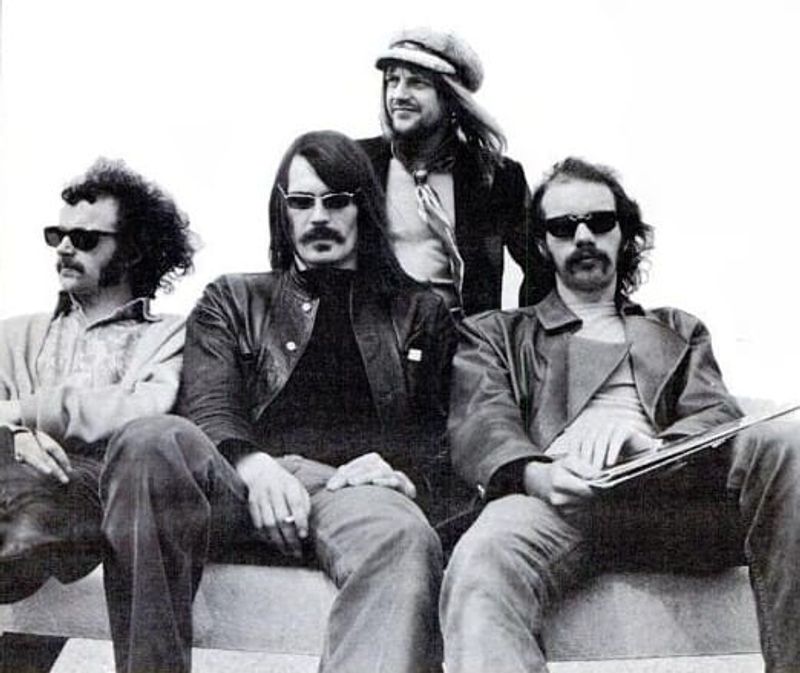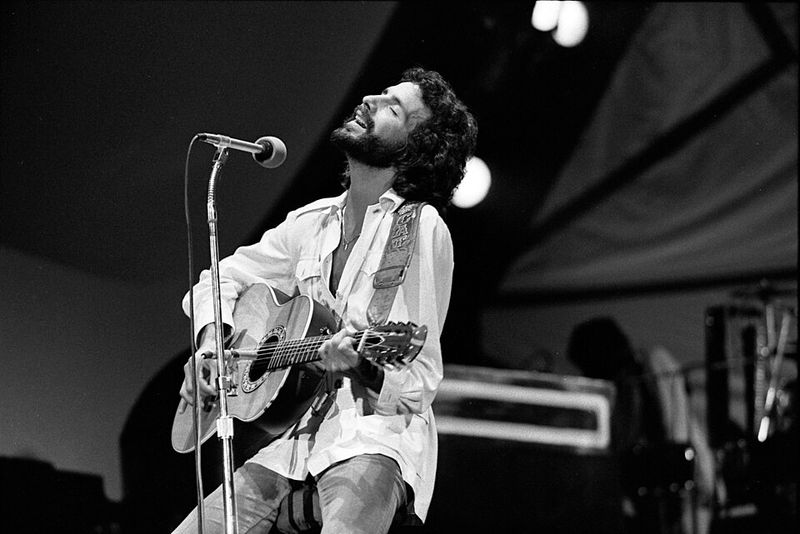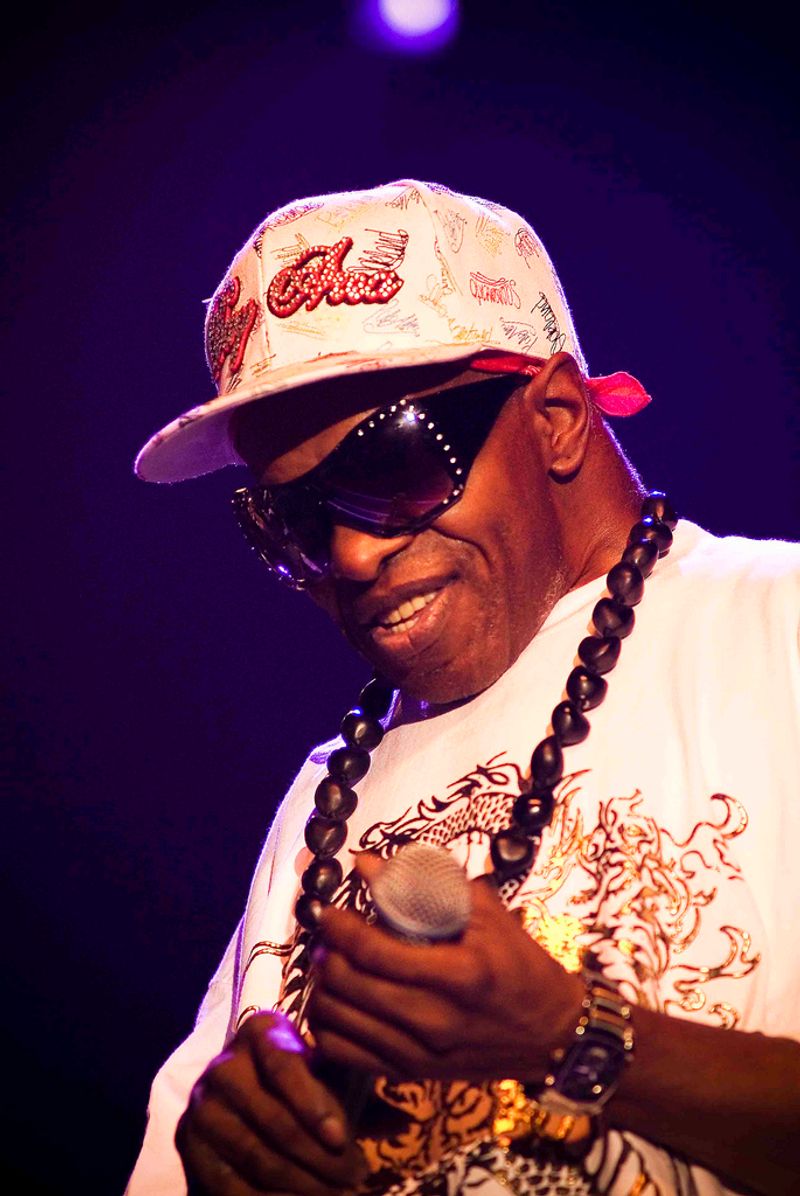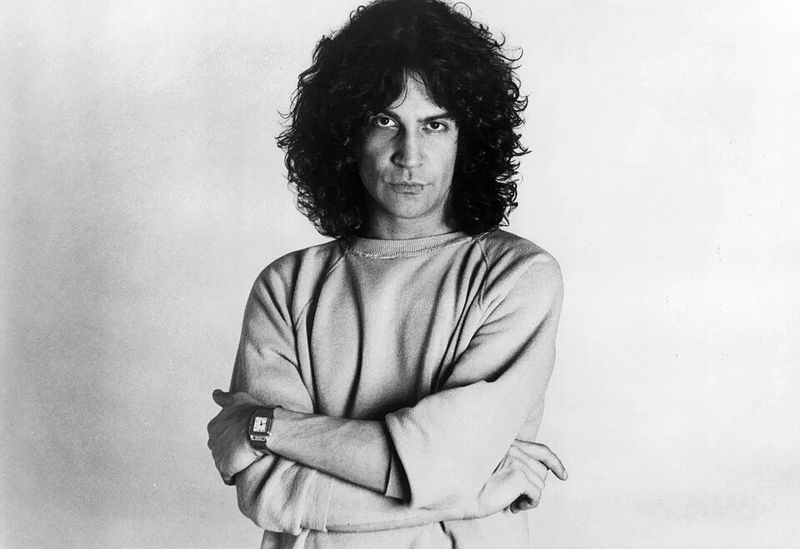Rock and roll history is full of incredible musicians who gave us unforgettable songs and performances. But some of the biggest names in music suddenly walked away from fame and fortune, choosing quiet lives instead. Whether dealing with health problems, feeling burned out, or simply wanting peace, these artists left fans wondering what happened. Their stories remind us that not everyone wants to stay in the spotlight forever.
1. Syd Barrett (Pink Floyd)
Syd Barrett helped create Pink Floyd’s signature psychedelic sound in the mid-1960s, writing hits like “See Emily Play.” His experimental guitar work and dreamy lyrics made the band stand out. But by 1968, something had changed dramatically.
Mental health struggles began affecting his ability to perform and write music consistently. Bandmates noticed he would stare blankly during shows or play out of tune on purpose. The combination of possible mental illness and heavy drug use made continuing impossible.
After leaving Pink Floyd, he recorded two solo albums before disappearing completely from public life. He spent his remaining decades living quietly in Cambridge, painting and gardening. Fans occasionally spotted him around town, but he avoided all music industry contact until his death in 2006.
2. Peter Green (Fleetwood Mac)
Peter Green founded Fleetwood Mac and made them one of Britain’s hottest blues bands by the late 1960s. His guitar playing earned praise from legends like B.B. King. Songs like “Albatross” and “Black Magic Woman” showed his incredible talent and creativity.
Right when the band was reaching its peak, Green shocked everyone by walking away in 1970. Psychiatric problems had been building, possibly worsened by a bad LSD experience in Munich. He gave away his money and said wealth felt wrong to him.
Green spent years in and out of hospitals, struggling with his mental health. He eventually returned to music in the 1990s but never regained his earlier fame. His quiet life continued until his death in 2020, leaving behind a legacy of brilliant blues music.
3. John Deacon (Queen)
John Deacon wrote some of Queen’s biggest hits, including “Another One Bites the Dust” and “You’re My Best Friend.” As the quiet member of the band, he let Freddie Mercury, Brian May, and Roger Taylor grab most of the attention. His bass lines were absolutely essential to Queen’s massive sound.
After Freddie Mercury died in 1991, Deacon continued with the remaining members for a few years. But following a 1997 tribute performance, he completely retired from public life. Friends say Mercury’s death deeply affected him and took away his desire to perform.
Today, Deacon stays involved only in major Queen business decisions but never appears publicly. He reportedly doesn’t even communicate much with his former bandmates. His total withdrawal remains one of rock’s most mysterious disappearances.
4. Bill Berry (R.E.M.)
Bill Berry’s drumming powered R.E.M. through their rise from college radio favorites to stadium-filling superstars. He also contributed backing vocals and occasional songwriting ideas. Everything changed during a 1995 show in Switzerland when he collapsed on stage from a brain aneurysm.
Doctors saved his life, and he recovered enough to record one more album with the band. However, the near-death experience made him rethink his priorities completely. In 1997, he announced he was leaving R.E.M. to pursue a quieter, simpler existence.
Berry bought a farm and focused on agriculture and spending time with family. He occasionally helped on friends’ recording projects but avoided touring or major publicity. His decision to choose health and happiness over fame impressed many fans who understood his choice.
5. Steve Perry (Journey)
Steve Perry’s voice became synonymous with Journey’s biggest power ballads like “Don’t Stop Believin'” and “Open Arms.” His incredible vocal range and emotional delivery made Journey one of the 1980s’ most successful rock bands. Fans couldn’t imagine Journey without his signature sound.
A hip injury requiring surgery derailed a planned 1998 tour, creating tension with bandmates who wanted to keep working. Perry needed time to heal properly, but the band felt pressured to maintain momentum. The disagreement led to his departure from Journey.
For nearly two decades, Perry avoided music almost entirely, turning down reunion offers and staying out of public view. He finally released solo material in 2018, explaining that grief over losing his girlfriend had kept him away. His occasional returns remind fans why they loved his voice so much.
6. Meg White (The White Stripes)
Meg White’s minimalist drumming style gave The White Stripes their distinctive raw sound throughout the 2000s. Her simple but powerful beats perfectly complemented Jack White’s guitar explosions. Critics initially questioned her technical skills, but her approach became iconic and widely copied.
Anxiety issues led to canceled shows and eventually contributed to The White Stripes’ 2011 breakup. Jack White himself once called Meg a “hermit” who preferred staying completely out of public view. The pressure of fame clearly weighed heavily on her from early on.
Since the band split, Meg has maintained almost total privacy, rarely photographed or mentioned publicly. Unlike Jack, who stayed extremely active musically, she seems content being completely away from music. Her disappearance remains so complete that it’s become legendary among indie rock fans.
7. D’Arcy Wretzky (Smashing Pumpkins)
D’Arcy Wretzky’s bass playing and backing vocals were integral to The Smashing Pumpkins’ massive 1990s success. Albums like “Siamese Dream” and “Mellon Collie and the Infinite Sadness” made them alternative rock royalty. Her chemistry with the band seemed perfect during their commercial peak.
Tensions with frontman Billy Corgan led to her 1999 departure, right before a planned final album. Legal troubles and personal struggles followed in subsequent years, keeping her away from music entirely. Fans hoped each reunion announcement might bring her back.
When the band reunited in 2018, Wretzky was notably absent, with conflicting stories about why. She’s remained largely out of public view since leaving, with only occasional social media activity. Her disappearance from one of the 1990s’ biggest bands continues puzzling longtime Pumpkins fans.
8. Jeff Mangum (Neutral Milk Hotel)
Jeff Mangum created one of indie rock’s most beloved albums with Neutral Milk Hotel’s 1998 release “In the Aeroplane Over the Sea.” Its raw emotion and strange lyrics about Anne Frank earned a devoted cult following. Just as the album was gaining momentum, Mangum vanished completely.
The sudden disappearance lasted years, with no interviews, shows, or new music from Mangum. Fans speculated endlessly about his whereabouts and reasons for leaving during his prime. Some reports suggested he simply felt overwhelmed by the attention and artistic expectations.
Mangum surfaced for rare solo acoustic shows in the late 2000s, then a full reunion tour in 2013-2014. Since then, he’s retreated again to relative privacy, releasing no new albums. His mysterious absences only increased the legendary status of his one masterpiece album.
9. Vinnie Vincent (KISS)
Vinnie Vincent replaced Ace Frehley in KISS and co-wrote hits like “I Love It Loud” during the early 1980s. His lightning-fast guitar solos brought a new technical edge to the band’s sound. After leaving KISS, he formed Vinnie Vincent Invasion, which showed promise before dissolving.
Legal battles with KISS and personal turmoil led Vincent to disappear from public view throughout the 1990s and 2000s. Rumors swirled about his whereabouts, with some fans wondering if he’d quit music entirely. His absence lasted an incredible two decades.
Vincent made a tentative return at a 2018 KISS Expo, looking dramatically different and clearly aged. Planned comeback shows fell through amid more controversy and confusion. His strange career trajectory and long disappearance remain among rock’s most unusual stories.
10. Peter Criss (KISS)
Peter Criss was KISS’s original drummer and the “Catman” character, singing their power ballad “Beth.” His jazz-influenced drumming brought swing and groove to the band’s hard rock foundation. Along with Gene Simmons, Paul Stanley, and Ace Frehley, he helped create one of rock’s most successful brands.
Criss left KISS multiple times over the decades, returning for various reunions before finally retiring. Health issues including breast cancer affected his later years and influenced his decision to step away. Brief solo farewell shows in 2017 marked his final public performances.
Since retirement, Criss has stayed out of the spotlight, focusing on health and family. Unlike some former members who criticized the band, he’s mostly maintained positive relationships. His decision to retire completely rather than chase nostalgia tours earned respect from longtime fans.
11. John Squire (The Stone Roses)
John Squire’s jangly guitar work defined The Stone Roses’ influential sound on their legendary 1989 debut album. His playing helped create the “Madchester” scene that bridged indie rock and dance music. Beyond music, Squire was also a talented visual artist who designed the band’s iconic album covers.
After The Stone Roses imploded in the mid-1990s, Squire formed The Seahorses but soon left music entirely. He became famously reclusive, focusing on painting and visual art instead of performing. His withdrawal from music disappointed fans who considered him one of Britain’s best guitarists.
Squire eventually resurfaced for select collaborations and even a Stone Roses reunion tour in the 2010s. However, he’s maintained a generally low profile compared to his 1990s fame. His dual identity as musician and painter makes him unique among disappeared rock stars.
12. Robert Wyatt (Soft Machine/solo)
Robert Wyatt co-founded the experimental band Soft Machine and later had a fascinating solo career blending jazz, rock, and political folk. A 1973 accident left him paralyzed from the waist down, but he continued making music from a wheelchair. His unique voice and artistic vision influenced countless musicians across genres.
After five decades of recording, Wyatt announced in 2014 that he was finished making records. He explained that he’d said everything he wanted to say musically and preferred a quieter life. The announcement came as a surprise but also felt earned after such a long career.
Wyatt’s retirement seemed peaceful and voluntary, unlike many musicians forced out by circumstances. His decision to stop on his own terms after 50 years showed artistic integrity. Fans respected his choice to end his recording career when he felt complete rather than continuing indefinitely.
13. Yusuf / Cat Stevens
Cat Stevens created some of the 1970s’ most beloved folk-rock songs, including “Wild World,” “Peace Train,” and “Morning Has Broken.” His gentle voice and thoughtful lyrics resonated with millions during the hippie era. He seemed destined for a long career as a major singer-songwriter.
In 1978, Stevens shocked the music world by converting to Islam, changing his name to Yusuf Islam, and leaving pop music entirely. He devoted himself to faith, education, and philanthropy instead of performing. His religious convictions led him to believe pop stardom conflicted with his spiritual path.
After nearly three decades away, Yusuf gradually returned to recording and performing in 2006. His comeback surprised many who thought he’d never sing again. His journey from pop star to religious teacher and back represents one of music’s most dramatic transformations.
14. Sly Stone (Sly & the Family Stone)
Sly Stone revolutionized funk and soul music with Sly & the Family Stone’s groundbreaking late-1960s albums. Songs like “Dance to the Music” and “Everyday People” broke racial and musical barriers with their integrated band and innovative sound. His influence on funk, hip-hop, and R&B cannot be overstated.
Drug problems and erratic behavior derailed Stone’s career by the mid-1970s, leading to decades of reclusiveness. Reports in 2011 claimed he was living out of a van in Los Angeles, shocking fans who remembered his former glory. His fall from superstardom to near-homelessness seemed almost unbelievable.
Stone has made rare public appearances over the years but never fully returned to consistent performing. His tragic story serves as a cautionary tale about fame’s dark side. Despite his disappearance, his musical innovations continue influencing artists across multiple genres today.
15. Billy Squier
Billy Squier dominated early-1980s rock radio with hits like “The Stroke,” “Lonely Is the Night,” and “Everybody Wants You.” His albums sold millions, and he toured arenas as a headliner. Critics compared his raw rock energy to legends like Led Zeppelin and The Who.
A controversial 1984 music video for “Rock Me Tonite” featuring questionable choreography severely damaged his tough-guy image. Combined with changing musical trends, his career momentum stalled dramatically. By the early 1990s, he’d largely stepped back from the spotlight.
Squier has surfaced occasionally for projects and appearances but never regained his early success. He seems content with a lower profile after experiencing both massive fame and its sudden loss. His story shows how quickly public perception can shift in the music business.
16. Paul Westerberg (The Replacements)
Paul Westerberg led The Replacements through the 1980s as one of alternative rock’s most influential bands. His honest songwriting about drinking, relationships, and feeling like an outsider resonated deeply with fans. Major labels courted the band, predicting huge mainstream success that never quite materialized.
After The Replacements broke up in 1991, Westerberg had a solo career but grew disillusioned with industry expectations. He retreated from the traditional music business model, preferring home-recorded releases and sporadic activity. Brief Replacements reunions happened, but he’s mostly stayed low-key.
Westerberg’s approach to his later career reflects his punk ethos of doing things his own way. Rather than chasing commercial success, he makes music on his own terms and schedule. His selective public appearances and DIY releases keep him connected to music without the industry grind.
17. Kate Bush
Kate Bush burst onto the scene in 1978 with “Wuthering Heights,” becoming the first woman to have a UK number-one single with a self-written song. Her theatrical performances and experimental art-rock albums made her an icon. Critics praised her unique voice and fearless artistic vision throughout the 1980s.
After her 1979 tour, Bush famously avoided live performances for 35 years, focusing instead on studio recordings. She explained that touring was exhausting and she preferred the creative control of working in the studio. Her absence from stages became legendary among fans.
Bush shocked everyone by announcing a 2014 concert residency in London, her first shows since 1979. The performances sold out instantly, proving her enduring appeal despite decades away. Her long spotlight avoidance followed by a triumphant return created one of music’s most remarkable comeback stories.
